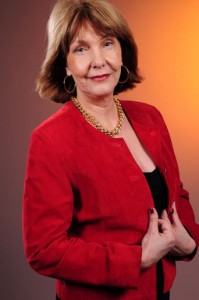
For years now we’ve been told that Artificial Intelligence was going to take over prospect research tasks. Truth is, it has. Well, some of them anyway.
Consider wealth screenings. What used to take month after month of tedious, routine, baseline capacity rating work now takes less than an hour. Upload your file, it processes, and presto! You have gift capacity ratings on your prospects based on external wealth matches.
Or how about the user-friendly lookup tools, such as iWave’s PRO, that remove the first step of searching that prospect research professionals used to perform?
Does all of this mean prospect research is on the fast track for complete takeover by the machines? Should you fire your researcher? No way!
Artificial Intelligence has had a lot of hype over the years and very little real action – until now. A few events have led to some breakthroughs:
- The internet has made vast amounts of data available, which can be used to train computers.
- Graphical Processing Units (GPUs), the specialized chips used in PCs and video-game consoles to generate graphics, have been applied to the algorithms used in deep learning, a type of Artificial Intelligence.
- Capacity to run GPUs can be rented from cloud providers such as Amazon and Microsoft, allowing start-ups to innovate.
Self-driving cars may still be on the horizon, but the bots are on the road already! They can schedule appointments on your calendar, draft replies to emails, and even read radiology imaging studies more accurately than a radiologist. The Economist describes the opportunity and threat quite succinctly as follows:
“What determines vulnerability to automation is not so much whether the work concerned is manual or white-collar, but whether or not it is routine.” (6/25/2016)
.
.
.
.
It’s easy to leap to the conclusion that prospect research professionals will lose their jobs to the machine – much of what we researchers do is routine – but that would be forgetting how machines have changed the world in the past.
Across the centuries, people have feared the march of the machines. In the late 1700’s to early 1800’s the Industrial Revolution rocked our world. As recently as the 1980’s, the rise of personal computers revolutionized the way we work. And with every introduction, much hand-wringing and predictions of unemployment were had.
How will prospect research professionals likely weather the advancing army of machine algorithms and programs?
Much the same as we adapted to wealth screenings and tools like iWave’s PRO. We learn new skills that wrap around the new technology. We leverage the new technology to work for us and for our fundraising team. We change the tasks we perform.
Prospect research professionals have a unique blend of skills. We can scan mountains of information and pull it together in a way that is meaningful for your specific need, whether that is creating a $5M gift strategy or a $5B campaign. We recognize the opportunities for our organizations in the data patterns the machine discovers.
If you want your organization to keep in step with the advances of machine learning, do NOT fire your researcher! Instead, reassure your prospect research professional of her value and insist that she take advantage of training that will give her the skills to use new technology. If you do this, she will be better able to guide you into new worlds, such as fundraising analytics … and beyond!
More Resources You Might Like
- Technology Killed the Fundraising Star
- Bots for Charity or: How Nonprofits Can Stop Worrying and Love Artificial Intelligence
- Opinion: Has Effective Altruism Lost Its Focus on Real Problems?
- Chat Bots vs. Google Search
- Rethinking Alumni Events with Machine Learning


 I usually attract two types of clients: those that want to identify major gift prospects and those that want research on identified prospects. No matter which service I provide, sometimes my clients get stalled on the next steps. You might have the donor prospect right there in front of you, but over time the path to a gift gets as lost as Hansel and Gretel’s bread crumbs in the forest of development activities.
I usually attract two types of clients: those that want to identify major gift prospects and those that want research on identified prospects. No matter which service I provide, sometimes my clients get stalled on the next steps. You might have the donor prospect right there in front of you, but over time the path to a gift gets as lost as Hansel and Gretel’s bread crumbs in the forest of development activities. I’d like you to imagine that prospect research is like salt. Too little salt and your food tastes bland, but too much and you end up bloated with water. No matter what the size of your budget or development shop you should always be using prospect research. The trick is using just the right amount. So how much research do you need when a prospect is in the cultivation phase?
I’d like you to imagine that prospect research is like salt. Too little salt and your food tastes bland, but too much and you end up bloated with water. No matter what the size of your budget or development shop you should always be using prospect research. The trick is using just the right amount. So how much research do you need when a prospect is in the cultivation phase?